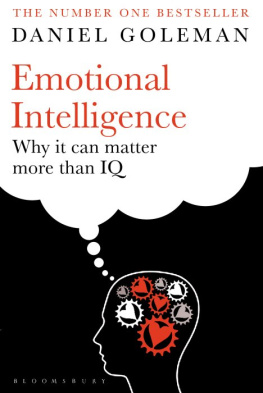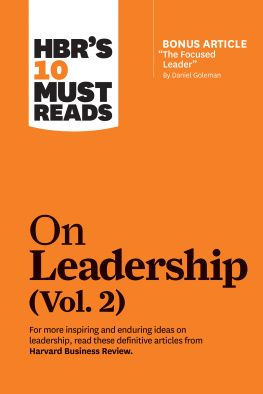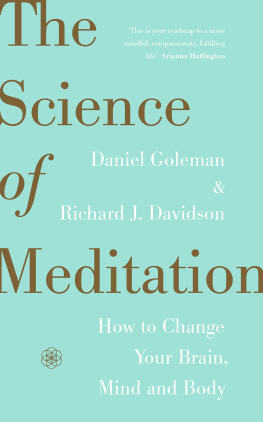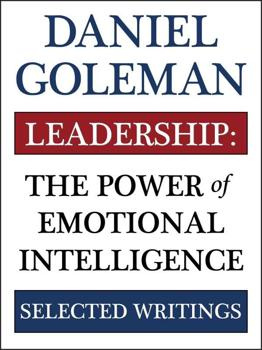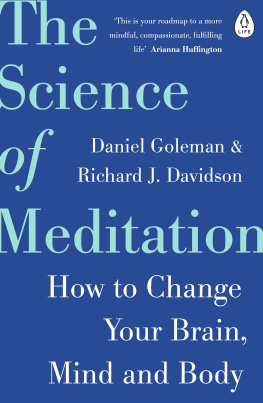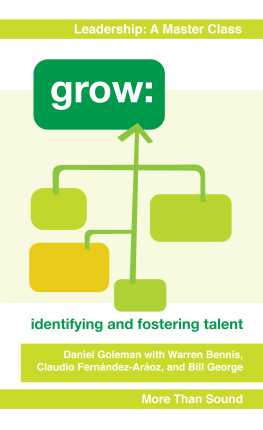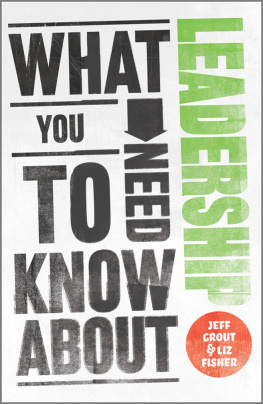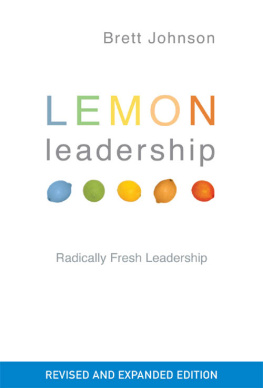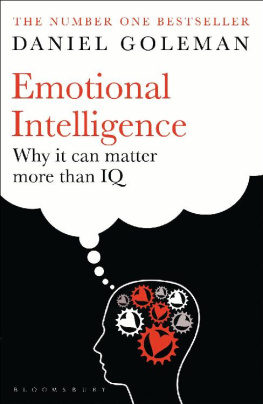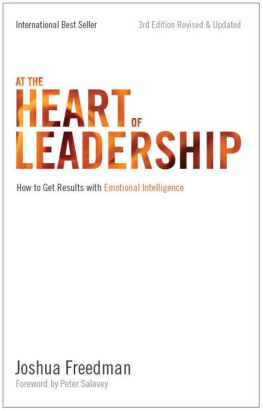Since 1922, Harvard Business Review has been a leading source of breakthrough ideas in management practice. The Harvard BusinessReview Classics series now offers you the opportunity to make these seminal pieces a part of your permanent management library.
HARVARD BUSINESS REVIEW
GOLEMAN
Each highly readable volume contains a groundbreaking idea that C L A S S I C S
continues to shape best practices and inspire countless managers around the world.
Drawing on a study of more than 3,000 executives, Daniel Goleman, LEADERSHIP THA
L E A D E R S H I P T H A T
bestselling author of Emotional Intelligence, explores precisely which G E T S R E S U L T S
leadership behaviors yield positive results. He outlines six leadership styles, each one springing from different components of emotional intelligence and each having a distinct effect on the working atmosphere of a company, division, or team, and, in turn, on its financial T GET
performance. Leaders who get the best results dont rely on just one leadership style; they use most of the styles in any given week. Gole-S RESUL
man details the types of business situations each style is best suited for, and he explains how leaders who lack one or more styles can expand TS
D a n i e l G o l e m a n
their repertoires.
US$9.99 / Management
Cover design: Kelly Blair
ISBN-13: 978-1-63369-262-6
9 0 0 0 0
Stay informed.
Join the discussion.
Visit hbr.org
9 781633 692626
L E A D E R S H I P T H A T
G E T S R E S U L T S
HARVARD BUSINESS REVIEW
C L A S S I C S
L E A D E R S H I P T H A T
G E T S R E S U L T S
D a n iel G ole m a n
Harvard Business Review Press
Boston, Massachusetts
HBR Press Quantity Sales Discounts Harvard Business Review Press titles are available at significant quantity discounts when purchased in bulk for client gifts, sales promotions, and premiums. Special editions, including books with corporate logos, customized covers, and letters from the company or CEO printed in the front matter, as well as excerpts of existing books, can also be created in large quantities for special needs.
For details and discount information for both print and ebook formats, contact booksales@harvardbusiness.org, tel. 800-988-0886, or www.hbr.org/bulksales.
Copyright 2017 Harvard Business School Publishing Corporation Originally published in Harvard Business Review in March 2000
Reprint #R00204
All rights reserved
Printed in the United States of America 10 9 8 7 6 5 4 3 2 1
No part of this publication may be reproduced, stored in or introduced into a retrieval system, or transmitted, in any form, or by any means (electronic, mechanical, photocopying, recording, or otherwise), without the prior permission of the publisher. Requests for permission should be directed to permissions@hbsp.harvard.edu, or mailed to Permissions, Harvard Business School Publishing, 60 Harvard Way, Boston, Massachusetts 02163.
The web addresses referenced in this book were live and correct at the time of the books publication but may be subject to change.
Cataloging-in-Publication data is forthcoming.
eISBN: 978-1-63369-263-3
The paper used in this publication meets the requirements of the American National Standard for Permanence of Paper for Publications and Documents in Libraries and Archives Z39.48-1992.
the harvard business
review classics series
Since 1922, Harvard Business Review has been a leading source of breakthrough ideas in management practicemany of which still speak to and influence us today. The HBR
Classics series now offers you the opportunity to make these seminal pieces a part of your permanent management library. Each volume contains a groundbreaking idea that has shaped best practices and inspired countless managers around the worldand will change how you think about the business world today.
{ v }
L E A D E R S H I P T H A T
G E T S R E S U L T S
Ask any group of businesspeople the question What do effective
leaders do? and youll hear a
sweep of answers. Leaders set strategy; they motivate; they create a mission; they build a culture. Then ask What should leaders do? If the group is seasoned, youll likely hear one response: the leaders singular job is to get results.
But how? The mystery of what leaders can and ought to do in order to spark the best
{ 1 }
Daniel Goleman
performance from their people is age-old.
In recent years, that mystery has spawned an entire cottage industry: literally thousands of leadership experts have made careers of testing and coaching executives, all in pur-suit of creating businesspeople who can turn bold objectivesbe they strategic, financial, organizational, or all threeinto reality.
Still, effective leadership eludes many people and organizations. One reason is that until recently, virtually no quantitative research has demonstrated which precise leadership behaviors yield positive results.
Leadership experts proffer advice based on inference, experience, and instinct.
Sometimes that advice is which precise leadership behaviors yield positive results.
{ 2 }
Leadership That Gets Results Leadership experts proffer advice based on inference, experience, and instinct.
Sometimes that advice is right on target; sometimes its not.
But new research by the consulting firm Hay/McBer, which draws on a random
sample of 3,871 executives selected from a database of more than 20,000 executives worldwide, takes much of the mystery out of effective leadership. The research found six distinct leadership styles, each springing from different components of emotional intelligence. The styles, taken individually, appear to have a direct and unique impact on the working atmosphere of a company, division, or team, and in turn, on its financial performance. And perhaps most important,
{ 3 }
Daniel Goleman
the research indicates that leaders with the best results do not rely on only one leadership style; they use most of them in a given weekseamlessly and in different measuredepending on the business situation. Imagine the styles, then, as the array of clubs in a golf pros bag. Over the course of a game, the pro picks and chooses clubs based on the demands of the shot. Sometimes
he has to ponder his selection, but usually it is automatic. The pro senses the challenge ahead, swiftly pulls out the right tool, and elegantly puts it to work. Thats how high-impact leaders operate, too.
What are the six styles of leadership?
None will shock workplace veterans. Indeed, each style, by name and brief description
{ 4 }
Leadership That Gets Results alone, will likely resonate with anyone who leads, is led, or as is the case with most of us, does both. Coercive leaders demand immediate compliance. Authoritative leaders mobilize people toward a vision. Affiliativeleaders create emotional bonds and harmony. Democratic leaders build consensus through participation. Pacesetting leaders expect excellence and self-direction. And coaching leaders develop people for the future.
Close your eyes and you can surely imagine a colleague who uses any one of these styles. You most likely use at least one yourself. What is new in this research, then, is its implications for action. First, it offers a fine-grained understanding of how different
{ 5 }
Daniel Goleman
leadership styles affect performance and results. Second, it offers clear guidance on when a manager should switch between them. It also strongly suggests that switching flexibly is well advised. New, too, is the researchs finding that each leadership style springs from different components of emotional intelligence.
Next page

